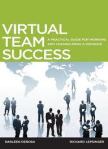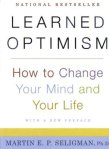Growth Mindset
August 4, 2014 § 8 Comments
 Remember the SAT math problem that starts out something like…
Remember the SAT math problem that starts out something like…
“Two trains are traveling towards each other from two cities 390 miles apart. Train #1 left it’s city at Noon and travels at a rate of 52 miles an hour……” For some of us (me included), I get anxious just reading this, and often reflexively think: “I can’t do these!” What we tell ourselves in the face of challenge, can be categorized into one of two mindsets: Growth or Fixed. Some examples of each:
Fixed Mindset:
- Failure is a sign of weakness.
- Anything less than perfect is a failure.
- Only weak people can’t solve their own problems.
- I can’t do it (math, finance Tango….).
Growth mindset:
- Exerting effort is the way to get better.
- Setbacks are an integral part of learning.
- I can find help to figure this out.
- I can’t do it, YET.
Khan Academy Research:
Research was carried out with over 250,000 students taking Khan Academy, online math courses. Some of the students were presented with a message on their study screen that said: “When you learn a new kind of math problem, you grow your math brain!” These students increased their rate of mastery by 3%. Those that received a message that said: “Some of these problems are hard, just do your best,” showed no increase.
Take Away:
You can help your team adopt a Growth Mindset culture by practicing the “Yet” intervention: If one of your colleagues says, “Oh, I just can’t do this budgeting stuff,” all you do is pipe up. Don’t be afraid of an irritable reaction. You are confronting a long held belief, and human nature is to defend the status quo. Just be consistent in your response, and they may very likely catch your disease. And, by the way, you can do the same for yourself.
For more on growing a positive mindset:
When a Good Thing is Too Much
February 26, 2014 § 4 Comments

As a measure of your Emotional Intelligence (EI) Multi Health System’s EQ-I 2.0 is a valid and reliable tool, and the one I prefer to use most in my assessment work.
EI is now widely accepted as an important & critical factor in our success, happiness, and the sin qua non for how we are viewed as a leader, partner and parent. Over the past six years I’ve worked with hundreds of seasoned and emerging leaders who look at their EI assessments to see how high they scored– or could have scored – on the 15 competencies. Like IQ, the EQ-i normalizes at 100, with 150 being the tippy-top of ability in any of the 15.
All of my clients want to be the best they can be, but I caution them: If an EI competency isn’t BALANCED with others, a derailment could be imminent in ANY part of life at work or home.
Below are descriptions of what it looks like to others when you overdo, or misapply important EI skills:
- Self Regard: “Blind to personal feedback; Arrogant.”
- Self Actualization (pursuing meaningful goals): “Leaves others in the dust.”
- Emotional Self-Awareness: “Too much focus on the ‘me.'”
- Emotional Expression: “Too much emotion, at the wrong time.”
- Assertiveness: “’My way or the highway” attitude.”
- Independence: “Not a team player; doesn’t accept help.”
- Interpersonal Relationships: “Avoids difficult conversations for fear of upsetting others.”
- Empathy: “Gets too caught up in others’ strong emotions. Catches their ‘dis-ease.'”
- Social Responsibility (team player): “Gives up on their own needs.”
- Problem Solving (staying focused when emotions are in play): “Ignores feelings; Impersonal.”
- Reality Testing: (Seeing things as they are, not what one wants them to be): “Relies too heavily on what is versus what could be.”
- Impulse Control: “Too thoughtful, slow, analytical.”
- Flexibility: “Gives in too much, wishy-washy.”
- Stress Tolerance: “Too laid back & out of synch with the situation.”
- Optimism: “Sets goals that are unrealistic.”
As stated, balance is everything. For example, it’s great if you’re above average in Assertiveness. After all, Winston Churchill did say: “You have enemies? Good. That means you stood up for something in your life.” But you need to temper it with Empathy, Impulse Control and Flexibility. After all, not every disagreement you’re in needs to be treated like your playing for the World Cup.
You Should Find Your X-Spots
February 22, 2014 § 3 Comments
 The 26.2 mile marathon is a physical and mental endurance event. What’s amazing is that near it’s end, as exhausted as runners are, when they have line of sight of the finish line they speed up and sprint to the end! Dr. Lewis G. Maharam, board chairman of the International Medical Directors Association calls this the “X-Spot.” It is the place “where runners first see the finish line and know they are going to finish.”
The 26.2 mile marathon is a physical and mental endurance event. What’s amazing is that near it’s end, as exhausted as runners are, when they have line of sight of the finish line they speed up and sprint to the end! Dr. Lewis G. Maharam, board chairman of the International Medical Directors Association calls this the “X-Spot.” It is the place “where runners first see the finish line and know they are going to finish.”
The X-spot, is where the brain sees its dear goal so close to being achieved. It then releases adrenalin and other chemicals that serve as accelerants and give the mind and body the energy and ability to achieve (like the stories we read of wives, mothers and daughters lifting cars off trapped loved ones). The X-spot phenomena is so powerful and predictable, it’s the place Maharam recommends marathon paramedics station themselves to provide 1st aid. In 2011 alone, Maharam had ten successful resuscitations at the X-spot.
When the brain learns what WAS POSSIBLE has NOW BECOME PROBABLE, it does all it can to make you get there. It happens at work too. Just think how you’ve felt when an important project neared it’s end. Relieved perhaps, but also very motivated to get it done. Like football running backs who run harder and faster the closer they get to the end zone.
We can use this natural process to help accelerate our abilities to be better leaders. If it’s true that the closer we perceive success to be, the faster we move towards it, then we need to find our X-spots early and often.
For example, let’s say you believe it’s important that you become more appreciative of those that work for you/with you (if you don’t beleive it, you should!)…then,
- At the end of a day, make a list of 3 people who did something you liked that day.
- Leave that short list on your desk.
- Start the next day with a note of thanks or praise to one of those people.
- Repeat this for 21 days for it to become a habit of appreciation.
The result:
- You will be achieving goals that are important to you.
- This will make you feel happier and stronger.
- High performers prefer to stick around leaders who feel happy, strong and appreciate them.
Bait the Hook to Suit the Fish
November 12, 2013 § 6 Comments
 Moving the mindset of another can be difficult, if not maddening at times. What makes clear sense to me creates shock and resistance in another. One of the greatest lessons my two children have taught me is how important it is to be thoughtful of who it is I’m trying to influence and how they like to be approached. And usually it’s different. What works with one, won’t work with the other. I’ll admit: It hasn’t been an easy lesson to learn.
Moving the mindset of another can be difficult, if not maddening at times. What makes clear sense to me creates shock and resistance in another. One of the greatest lessons my two children have taught me is how important it is to be thoughtful of who it is I’m trying to influence and how they like to be approached. And usually it’s different. What works with one, won’t work with the other. I’ll admit: It hasn’t been an easy lesson to learn.
50 years of research done by TRACOM GROUP has revealed that people prefer different types of communication. They have identified four distinct ways of interaction, or four SOCIAL STYLES℠ : Analytical, Expressive, Amiable and Driving.
My oldest has an Analytical style of interaction. She prefers accuracy, logic and a measured, reserved pace. For her to make a decision, adopt a new viewpoint, or change direction, she needs not to feel rushed. Her need for information, sometimes a lot if it, needs to be satisfied. Reducing the emotional content and avoiding opinions allows her to be open to, and accepting, of new ideas. In an influence situation, the best thing I can do for my favorite child is to give her information and give her time to digest and prepare.
On the other hand, her brother, my other favorite child, is Expressive Styled. He hungers for the sharing of feelings on an issue, a quick paced, spontaneous interaction, and a reliance on making decisions based on a gut feel. When I get into the small details (something I personally like to do) he feels overwhelmed, frustrated and is quick to reject and move on. Personal recognition – especially as it relates to him and the issue at hand – carries a lot of weight. When he gets it, it leaves him more open to my viewpoint. Typical of the Expressive Style.
You can learn more about the communication needs of these SOCIAL STYLES℠and about the Amiable and Driving Styles by visiting TRACOM’S website. My biggest take-away with my experience and use of the SOCIAL STYLES℠ model is – in an influence situation – de-focus on the Golden Rule and put more valence on the Platinum Rule: “Do Unto Others As They Would Like To Have You Do Unto Them.”
In other words, as Dale Carnegie said: “Bait the hook to suit the fish. “
“
Clear Thinking & Healthy Anxiety
October 21, 2013 § 4 Comments
 The Rabbis of the Talmud debated what were the best qualities towards which a person should strive. Five of the answers offered were, unselfishness, goodwill, kindness, helpfulness, and friendliness. Rabbi Shimon digressed with a different view of what we should aspire to as a best quality: “the ability to see the not-yet-born.”
The Rabbis of the Talmud debated what were the best qualities towards which a person should strive. Five of the answers offered were, unselfishness, goodwill, kindness, helpfulness, and friendliness. Rabbi Shimon digressed with a different view of what we should aspire to as a best quality: “the ability to see the not-yet-born.”
Shimon believed in the importance of thinking ahead, with a healthy consideration of all things that could go wrong. Like the Boy Scout motto – “Be prepared.”
Consider driving a car: While driving through a residential neighborhood you look ahead and see a group of kids playing ball on the sidewalk. You register this and think about a possible missed catch and a child running after a ball into the street. In milliseconds, the defensive driver will:
- Take the foot off the gas pedal, and place it over the brake,
- Check the rear view mirror to see if a car is behind (in case of a quick stop),
- Look for room to swerve, and
- Be ready to honk the horn.
999 out of 1,000 times, the ball stays off the road and a child is safe, but when that one time happens, the defensive driver is prepared and ready to avoid an accident. This is wisdom.
A healthy dose of anxiety is normal, helpful, makes us good people (Rabbi Shimon), keeps us wise, on our game, and performing well. Often experienced as a mild wave, belief in a future threat (anxiety) propels us to anticipate the child in the street, or practice and prepare before a presentation. But sometimes, our overactive mind leads us to catastrophizing by creating beliefs about upcoming situations that are not necessarily true:
- “This is not going to go well”
- “There’s just no way I can take on any more”
- “They’re going to think I’m boring”
- “This isn’t perfect & they’ll see me as a failure”
- “My boss will never go for it”
- “I’ll never be able to learn this new system”
These beliefs of “not-yet-born” events may not necessarily be true. In fact, they most often are not. We jump to these conclusions and associate them with our survival. Besides wreaking biologic havoc on ourselves, cognitive distortions, such as catastrophizing, makes it difficult for others to follow us.
Emotions are neurogically contagious. If your boss has the flu, where do you want him? Same place you want him if he’s a worrier: Not near you.
A clear thinking leader challenges and regulates their own thinking by reality checking their beliefs. If you can catch and readjust yourself in the moment, great. If not, do a post-hoc analysis and pressure test the beliefs that were blowing you over. If your pitch wasn’t perfect – do they really see you as a failure now? The key is that the more you think about how you think, the more you will be able to regulate your emotions when they begin to lead you awry.
Motivational lessons from Betty Crocker, IKEA & the Industrial Revolution
April 13, 2013 § 11 Comments
 In 1952, the Betty Crocker brand rolled out its Cake Mix. A powder in a box that housewives were asked to add in water, mix, put it an oven, and voila, they would have cake. This was predicted to be a popular product. But as it turned out, it wasn’t.
In 1952, the Betty Crocker brand rolled out its Cake Mix. A powder in a box that housewives were asked to add in water, mix, put it an oven, and voila, they would have cake. This was predicted to be a popular product. But as it turned out, it wasn’t.
Research was done and findings showed that the problem wasn’t the cost, taste, texture or look of the product. Also, no problem with the “fresh, home-made” quality, as advertised. The problem, according to the psychologists, were the eggs. They found, that for the housewives, it was too easy a cake to make. They weren’t putting in enough effort. It was so easy, that nobody could serve cake to their guests, feel ownership, say “here’s my cake!” It felt like someone else’s. So what did Betty Crocker do? They took the eggs out of the powder. The act of breaking eggs & adding them turned sales around dramatically.
It’s like the IKEA effect. People compliment me on my new bookshelf unit. I know it’s cheap furniture, and I don’t particularly enjoy putting it together, nor would I give the  instructions an A+, but I am guilty of feeling proud when I hear the compliment. And I love the unit! The fact is, I (and you) tend to love stuff more when we put more effort into it. It’s like me with my 16 year old son. If you asked me how much money I would want in order to agree to sell him to you, I would say you’re crazy. Not for $100 million! (on a good day). But if he wasn’t my son, and I had the occasion to meet him, and spend a day with him, and then you offered to sell him to me what price would I pay to be his father? Would $100m reflect the value I believe I would receive? I won’t answer that, but you get the point.
instructions an A+, but I am guilty of feeling proud when I hear the compliment. And I love the unit! The fact is, I (and you) tend to love stuff more when we put more effort into it. It’s like me with my 16 year old son. If you asked me how much money I would want in order to agree to sell him to you, I would say you’re crazy. Not for $100 million! (on a good day). But if he wasn’t my son, and I had the occasion to meet him, and spend a day with him, and then you offered to sell him to me what price would I pay to be his father? Would $100m reflect the value I believe I would receive? I won’t answer that, but you get the point.
So, what does this mean to us as leaders and managers? The great economist, Adam Smith, wrote about a pin factory. He said that it takes 12 steps to make a pin. Smith also said that when one person does all 12 steps, production is low, but if we have an assembly line with 12 experts in a row, production increases by a lot. Thus the Industrial Revolution was spawned.
However, this situation also produces alienation and disengagement from work, and in the case of the pin factory, the workers eventually don’t care as much about the pin as the craftsman who made a whole pin. In the 18th and 19th centuries, this was a manageable problem. At the end of the production line, there was a quality control guy who threw the rejects into a bin. My manufacturing and engineering friends – and likely the rest of us – now know this is not the best way to make stuff.
The reality of the 21st century is that we have switched to a knowledge economy, where meaning may be more important than (or at least equal to) efficiency. People now have to decide more on their own, and as boundaries between personal and work time blur, how much of our effort, attention, focus and heart go into our work as we live our lives? What helps us stay engaged and motivated?
So, when thinking about motivation, think more than $. Think meaning, challenge, ownership, identity and pride. From what I’ve seen, when those are in place, you also get more productivity.
For more on this, visit the TED Talk that inspired this post: Dan Ariely’s TED Talk: What Makes us Feel Good About Our Work.
Lead With A Story – Not A Spreadsheet
February 9, 2013 § 2 Comments
 For more than twenty years of teaching and facilitating corporate leadership programs, I’ve had the privilege to experience officers as they visited and spoke to my classes. They were there to present and connect with very important populations – the ones who manage the front lines of large, global organizations. Until a few years ago, these incredibly smart and experienced executives pretty much followed the same path with their pitches:
For more than twenty years of teaching and facilitating corporate leadership programs, I’ve had the privilege to experience officers as they visited and spoke to my classes. They were there to present and connect with very important populations – the ones who manage the front lines of large, global organizations. Until a few years ago, these incredibly smart and experienced executives pretty much followed the same path with their pitches:
- “Good morning, I’m (name),
- “I started in (company) in (year), “
- “First, I worked as (role) in (sub-business), then moved to (another sub- business) where I eventually took over running (current major responsibility).”
- “Let me show you what we do in our business (show slides of products and services most everyone in the class knows about – really well).”
- “Here’s how we’ve done on our key measures (show finance slides showing a 5 year progression on revenue, cash flow, margins, etc.).”
- “Our challenge is to grow (key measure), and it looks like we’re on track (describe broad strategy).
- (30 minutes later) “What questions do you have?”
Get the picture? The irony is that to get to their level, these men and women had to have accomplished a lot, overcome a lot, experienced a lot. A lot that others could learn from. Yet from the back of the class, what I saw was disconnection. In the 1990’s I saw copies of newspapers on participants’ desks getting furtive glances; later it was Blackberries held under the desks.
from. Yet from the back of the class, what I saw was disconnection. In the 1990’s I saw copies of newspapers on participants’ desks getting furtive glances; later it was Blackberries held under the desks.
That was then. Today, many of the most successful organizations are using storytelling as a key leadership tool. Companies like General Electric, Proctor & Gamble, Microsoft, FedEx, NASA, The World Bank and others are intentionally helping their leaders learn to lead with stories instead of bullet points. Goodbye Power Point. Hello Corporate Officer and your stories. Hello stories that captivate, engage, and persuade. Stories that teach lessons about:
- Learning from personal failure,
- Integrity,
- Making tough decisions,
- Balancing people with profit,
- The necessity of a clear vision & purpose,
- The importance of inclusion,
- External focus and what serving a customer means,
- The challenge of those first 90 days on a new job,
- Heroes and what they achieved,
- Positional power not being enough to influence commitment.
When the stories are structured and told well, you can feel the engagement in the room. For me, it feels like I’m a kid again. Wide-eyed and wanting to ask “… then what happened next?”
I’ve been inspired to decrease the Power Point, and use more storytelling in my classes. More fun for me, more emotional movement for them. I use my own stories and the stories I heard from others. I also use the stories from Paul Smith’s book: Lead With A Story. He shares true stories that any of us can use to inspire & lead others. BIG HELP: Paul indexes his stories based on common leadership themes (Culture, Values, Diversity, Customer Service, Leading Change, Policy, etc.). He also teaches how to structure your own story to capture attention (think Hollywood).
From Paul’s book, here’s a story I use when I teach Global Effectiveness. It demonstrates the importance of knowing the local culture in which you work. It’s a story told often by P&G CEO Bob McDonald when he speaks to execs operating in different countries:
“AT 5.46 A.M. on January 1995, a massive earthquake shook the city of Kobe, Japan, killing 5,000 people, and leaving 300,000 injured or homeless. Measuring 6.9 on the Richter scale, it was the worst earthquake Japan had experienced in 70 years. One of the hardest hit parts of the city was Rokko Island, a man made island about 2 miles square that sits 500 yards off the southern coastline, in the Port of Kobe. It’s connected to the mainland by only two bridges. Both were heavily damaged by the quake, and impassible. For several days people on the island were unable to leave, and food and supplies were slow to get in. P&G’s Northeast Asia headquarters is located on Rokko, as are the homes of many of it’s employees who work there.
During the days after the quake some of the only accessible food was vending machines. When a vending machine was found working, a line would quickly form in front of it until its contents were gone. At one such machine, on P&G grounds, one of the men lined up was an expat manager from the United States on a temporary assignment in Kobe. When he finally reached the front of the line, he purchased four beverages – one for each member of his family-and then left. If he had been more observant, he would have noticed that everyone else in line purchased only one beverage and then went to the back of the line to wait for an opportunity to buy a second or third.
Fairness, and attention to the group is an important part of the Japanese culture. Everyone in line surely would have preferred to purchase several items at once. But out of respect and fairness to others, they waited in line for each purchase. And while the expat manager didn’t notice what the Japanese employees did at the vending machine, they certainly noticed what he did. Even in this most extreme situation-when a man could surely be forgiven for thinking of his family first-his behavior was viewed as dishonorable. Long before the office was repaired and ready to resume operations, word had spread of his misdeed. His reputation was damaged to the point that he could no longer function as a leader. You can’t lead a group of people that doesn’t respect you.
Thank you Paul for teaching us how to lead, one story at a time.
Hate Networking? Four simple practices to do and feel good about yourself
December 24, 2012 § 6 Comments
 The “N” word has a bad reputation. Word associations I hear: “Using,” “Selling,” “Disingenuous,” “Manipulation,” “Taking.” Frankly, I don’t blame people for having this bias. I’m betting all of us have had the experience of getting the phone call or email from a former colleague or friend who’s been out of touch – and now they want a reference or a lead. They make the small talk – but you knowingly wait for the great sucking sound to commence. At a business networking conference a few years ago, the keynote speaker asked the audience to raise hands if they were there to sell something. Half raised their hands. When asked if anyone was there to buy something. No one raised a hand.
The “N” word has a bad reputation. Word associations I hear: “Using,” “Selling,” “Disingenuous,” “Manipulation,” “Taking.” Frankly, I don’t blame people for having this bias. I’m betting all of us have had the experience of getting the phone call or email from a former colleague or friend who’s been out of touch – and now they want a reference or a lead. They make the small talk – but you knowingly wait for the great sucking sound to commence. At a business networking conference a few years ago, the keynote speaker asked the audience to raise hands if they were there to sell something. Half raised their hands. When asked if anyone was there to buy something. No one raised a hand.
In today’s connected world, more than ever it’s who knows you, and how they know you that makes the difference in getting the next foothold on the climbing wall of your career. Your uniqueness – that thing that differentiates you from others who do what you do – is crucial and you need to care for it like you do your favorite plant. You do not want to be seen as a commodity.
You already have a network. Here are 4 simple practices you can do – with integrity to distinguish yourself. AND, as you will see, make yourself feel good in the process of nurturing any relationships you want to grow.
- Give Positive Feedback. It’s no coincidence that “feed” is part
 of the word. People are starved for honest, real, specific, recognition feedback. We live and work in a culture of “improvement upon our weaknesses.” Tell people that you liked what you saw or experienced. Focus on the behavior or product they produced, and how it positively impacted you and any others involved. Were you impressed by their pitch at the project update meeting? Why?
of the word. People are starved for honest, real, specific, recognition feedback. We live and work in a culture of “improvement upon our weaknesses.” Tell people that you liked what you saw or experienced. Focus on the behavior or product they produced, and how it positively impacted you and any others involved. Were you impressed by their pitch at the project update meeting? Why? - Send Thanks You Notes. Email is great, but vary it with
 handwritten notes. Remember the last time you got one and how it made you feel? Can you recall a time when you shared info with someone, or gave a referral – and never heard anything afterwards? How did that make you feel? And by the way, research out of Harvard correlates your personal level happiness to the amount of appreciation you communicate to others.
handwritten notes. Remember the last time you got one and how it made you feel? Can you recall a time when you shared info with someone, or gave a referral – and never heard anything afterwards? How did that make you feel? And by the way, research out of Harvard correlates your personal level happiness to the amount of appreciation you communicate to others. - People Have Lives, Remember Things About Them. I have a client, a senior VP in sales, who keeps a card file on each of her sales people. When she goes to a regional meeting, she
 reminds herself to ask whether a child got into Yale (the stretch school), how their parent is recovering from surgery, or if they made the decision to buy the Audi or not. Did their husband get the job? They love her, because she shows that she cares about them by remembering things about their lives – not just her business objectives
reminds herself to ask whether a child got into Yale (the stretch school), how their parent is recovering from surgery, or if they made the decision to buy the Audi or not. Did their husband get the job? They love her, because she shows that she cares about them by remembering things about their lives – not just her business objectives - Reach out to others before they reach out to you – and don’t keep track! Be the one to stay in touch. Say hi and tell them you were thinking about them and wondering how they are – without asking for anything. Subscribe to BirthdayAlarm.com
 to get auto reminders of birthdays. It’s all digital and automatic. Just click on the digital card you want sent and add a personal thought. I’ve been using it for years, and amazingly, people gush how impressed they are with my ability to keep track of their birthdays.
to get auto reminders of birthdays. It’s all digital and automatic. Just click on the digital card you want sent and add a personal thought. I’ve been using it for years, and amazingly, people gush how impressed they are with my ability to keep track of their birthdays.
Hopefully, these 4 simple practices will move you off a negative bias preventing you from nurturing your network. Make a list of people you want to stay in touch with. The more value you put into your network, the more your professional networth will increase.
Good luck!
Workforce Engagement – 2012. What does it mean for you as a manager?
December 22, 2012 § Leave a comment
 The 2012 Kelly Global Workforce Index is out. It surveys 168,000 multi-generational employees from 30 countries and points to changing attitudes related to job mobility, career progression, skill development, and beliefs about the job market.
The 2012 Kelly Global Workforce Index is out. It surveys 168,000 multi-generational employees from 30 countries and points to changing attitudes related to job mobility, career progression, skill development, and beliefs about the job market.
According to the report, less than 1/3 of employees believe that their career would benefit from staying with their current employer; and about ½ believe that a constant state of employment motion will help them achieve career growth and skills development.
While the notion of a career-for-life is fading, it is not completely dead. Here’s some fun facts about our employees:
- 49% are always on the lookout for new opportunities,
- 54% believe they are in a position of high demand,
- 69% think they can find a better, or at least similar position,
- 53% prefer changing employers to advancing their career where they are.
Age-wise, here’s how many agreed that a ‘career-for-life’ with one employer is still relevant:
- 32% of Millennials (age 19-30),
- 29% of Gen Xers (31-48),
- 28% of Boomers (49-66)
Globally, those that agreed that a work history with multiple employers would be an asset:
- 65% in the Americas
- 73%, in EMEA
- 70% in APAC
Nearly ½ of those surveyed said they are looking at the job market for better opportunities. The break down by region:
- 40% Amercias
- 53% EMEA
- 54% APAC
Of note was the finding that even in regions where economic and market conditions are the toughest, individuals tended to be optimistic about the chance of finding similar or better positions. This attention to considering switching jobs – and succeeding at the attempt – could be explained in part by the poor outlook employees see ahead of themselves if they stay in the same job: Less than 1/3 surveyed believe they will progress in their careers, or get promoted in their current orginzation within the next year.
So as managers, what should we take from this?
Know that your direct reports are eager to advance (read: DEVELOP) in their careers and remain relevant. Especially the high performing ones. Pay attention to them, not just to the squeeky wheels in your unit.
- Understand that the reality of career development as an ascent up a ladder (with fewer rungs) is outdated.
- Provide opportunity for job renewal, personal growth, skill development and relevance WITHIN every job.
- Instead of a ladder, view career development as a lattice, or a climbing wall. Lateral moves, moves down and to the side (to gain experience, or manage family issues), growth in place to develop new skills and gain exposure to changing markets and technology, taking on greater challenges and more scope in decision making, are all ways to help people develop, grow and foster engagement.
- But most of all (and much research converges on this truth), be the manager you would want to work for, and demonstrate, in your own way, how much you care about each of your employees including the challenges and joys they experience in their lives at work and home.
I can’t tell you home many times (at least 100) I’ve spoken to individuals who tell me that even though the  pay, the team, the benefits and the work are all great, they are planning to leave because of the way they are treated by their manager. In many a case, I know these managers, and they are not the kind of people who wake up in the morning, look in the mirror and say: “today I’m going to be a jerk.” They eat their Wheaties, get to work, and focus on getting goals and objectives met. Not much else.
pay, the team, the benefits and the work are all great, they are planning to leave because of the way they are treated by their manager. In many a case, I know these managers, and they are not the kind of people who wake up in the morning, look in the mirror and say: “today I’m going to be a jerk.” They eat their Wheaties, get to work, and focus on getting goals and objectives met. Not much else.
So, if you care about the engagement of your people, you need to think broader about the role you play as a manager in their lives.
Good luck!
Happy Companies – 2013
December 11, 2012 § Leave a comment
 This week, CareerBliss published it’s list of the 50 Happiest Companies in America for 2013. Some have moved up from last year, some have moved down. Two that I would have predicted to make it into the top 10 surprisingly didn’t (Google #18; Apple #42).
This week, CareerBliss published it’s list of the 50 Happiest Companies in America for 2013. Some have moved up from last year, some have moved down. Two that I would have predicted to make it into the top 10 surprisingly didn’t (Google #18; Apple #42).
The Top 10:
- Pfizer
- NASA
- U.S. Department of Defense
- KBR
- Cisco Systems
- Motorola
- Avaya
- General Electric
- Qualcomm
- Cognizant
CareerBliss, with over 600,000 company reviews, recognizes companies “that excel at providing happy work environments.” The company also posts more than 3 million job listings making it a place taken notice by job seekers.
So, what differentiates happy companies from the norm? According to CareerBliss, they are work places where “employees enjoy the people they work with and the support they get…….(and) in all of these companies (employees) have the freedom to use their knowledge, skills, and abilities to solve interesting problems…….(which) can be intrinsically motivating and leads to a happy workplace.”
Nice to see how this supports what Dan Pink wrote about in his 2011 Book “Drive,” where he points to reams of research that describes today’s workforce (especially those employees in roles that demand innovative, independent  thinking and problem solving) as motivated by the…
thinking and problem solving) as motivated by the…
- Need for autonomy to make decisions on what they do and how they do it,
- The opportunity to continually get better at stuff (mastery), and
- The setting where they can have a sense of meaning and purpose for what they do.
How different the world of work is from the days “management” was invented in the 1850’s as a technology to direct, organize and control humans hired to meet the needs of the industrial revolution. Then, it was about tools, tasks, carrots and sticks. Not so anymore.
Those of you looking to attract and retain key talent. Take notice.
Do Women Make Better Leaders, and If So, Why?
December 10, 2012 § 2 Comments
 Over the past three years, research out of Pepperdine University, MIT, the Harvard Business School, and other research centers have pointed to a positive correlation between number of women in leadership to an organization’s performance. True also in lab settings measuring team performance and team creativity. While caution is advised in overgeneralizing and stereotyping successful leadershjp behavior based on gender (not all women share these key values and traits, and there are many men who have them), Sharon Hadary and Laura Henderson (How Women Lead) have distilled the findings into key strengths common to great women leaders. Here are a few noteworthy ones from their book. None of these traits are hard wired. They are doable and are not beyond the reach of any of us:
Over the past three years, research out of Pepperdine University, MIT, the Harvard Business School, and other research centers have pointed to a positive correlation between number of women in leadership to an organization’s performance. True also in lab settings measuring team performance and team creativity. While caution is advised in overgeneralizing and stereotyping successful leadershjp behavior based on gender (not all women share these key values and traits, and there are many men who have them), Sharon Hadary and Laura Henderson (How Women Lead) have distilled the findings into key strengths common to great women leaders. Here are a few noteworthy ones from their book. None of these traits are hard wired. They are doable and are not beyond the reach of any of us:
- Women are values-based: Highly successful women leaders define their values and tend to use them as a lens to make decision. This tends to give women more moral courage when faced with difficult choices.
- Women are holistic: They have a multi-faceted perspective on the world. They go beyond black and white facts and numbers, and include culture, relationships and values as key drivers in problem solving. In a sense, this give them the ability to ‘see around corners.’
- Women are inclusive and collaborative: They build strong relationships with vendors, customers and across organizational boundaries. They encourage contribution in meetings and tend to act more non-hierarchical in evaluation of ideas. They are less concerned about getting their idea approved, and more concerned about finding the best decision.
- Women invest time in consultation: They are more likely to spend time with those who have to implement a decision, or be affected by it, resulting in more long lasting buy-in to change, and reduced time to implement it.
- Women bring a commitment to a purpose greater than themselves: Going beyond their personal territorial goals, they help team members individually understand how they can contribute to larger organizational aspirations as well as meet personal career goals, thus generating more motivation and commitment.
- Women generate trust from employees: They get to know their direct reports, and are more likely to be described as a boss who knows and cares about what’s going on in their direct reports’ lives. People tend to go the extra mile for those they believe care about them.
Just these few traits are worth paying attention to, especially in this millenium as the need for more  inclusive leadership grows as an attractor & retainer to new employees. The classic John Wayne type of command and control worked in the past, and still does in certain situations now, but it’s not the model most people want to follow now.
inclusive leadership grows as an attractor & retainer to new employees. The classic John Wayne type of command and control worked in the past, and still does in certain situations now, but it’s not the model most people want to follow now.
50% Chance Your Direct Reports Think You Aren’t Tough Enough
November 10, 2012 § 2 Comments
 According to research posted this week in an HBR blog, 50% of managers don’t hold their people accountable. While upper-level managers talk the talk of performance evaluation, follow-up, and follow-through, they don’t walk that talk. At least half of them don’t.
According to research posted this week in an HBR blog, 50% of managers don’t hold their people accountable. While upper-level managers talk the talk of performance evaluation, follow-up, and follow-through, they don’t walk that talk. At least half of them don’t.
Darren Overfield and Rob Kaiser’s database of more than 5,400 managers found that across all regions of the world, 46% of these managers were rated as below par on holding their people’s feet to the fire when it came to confronting their direct reports on what executive coach Alan Fine calls “SAY-DO-CO” behavior (say what you’ll do, do what you’ll say, communicate when there’s a problem). The ratings were from bosses, peers and direct reports. That’s right, 1/2 of direct reports say their managers are not tough enough.
Most of us view upper management as tough minded, goal focused players. Apparently this is not the case as much as we may believe, or want to believe. Overfield and Kaiser hypothesize that too many managers have succombed and over-reacted to the pressures of the human relations movement and are too focused on their popularity which these managers believe increases when they don’t hold their people accountable. The researchers add that this trend has continued and perhaps intensified as the workforce has grown younger with the assumption that Gen Y’ers become indignant in the face of criticism, and the fear that as managers, they will lose the talent in their teams.
This indignant thing is not my experience, and I challenge you to think of your own experience. In my work with hundreds of managers and direct reports every year, I see that people thrive when managers tell people what’s expected, help them get there, and then hold them accountable. Just think of any sport. How would you like to play it if you never found out your score or whether you were qualifying or not? If your coach never had “the talk” with you? The problem I do see is that too often, managers get fuzzy on expectations (goals and rules unclear), and then the accountability discussion, rightly so, gets contentious and both managers and direct reports collude to avoid confrontation.
hundreds of managers and direct reports every year, I see that people thrive when managers tell people what’s expected, help them get there, and then hold them accountable. Just think of any sport. How would you like to play it if you never found out your score or whether you were qualifying or not? If your coach never had “the talk” with you? The problem I do see is that too often, managers get fuzzy on expectations (goals and rules unclear), and then the accountability discussion, rightly so, gets contentious and both managers and direct reports collude to avoid confrontation.
Take away: Look yourself in the mirror and ask:
- Would my team say I’m clear and upfront in my expectations of goals and behaviors?
- Would they say I provide the right amount of support and tools to get there?
If the answers are yes, don’t be afraid to have the talk. Even if your direct reports feel uncomfortable, in the long run, they will respect you.
Great Global Leaders Study: 4 Myths, 2 Truths
September 18, 2012 § Leave a comment
Successfully managing a business, team or project across multiple, complex and diverse geographies would earn you the reputation of being a Great Global Leader. As in situations where you are co-located with your stakeholders, being globally successful means reaching goals and maintaining relationships. However, the root of the Global Leader challenge lies in the complexity of the global role.
According to a Corporate Executive Board’s recent study, compared to leaders co-located with their teams, Global Leaders, in general:
- Work with 17% more people they do not directly manage,
- Are 32% less likely to have accurate market information,
- Have a 74% broader span of responsibilities,
- Work with 160% more stakeholders.
4 Myths debunked by the study:
- Great Global Leaders do not need prior international experience. (more than ½ of the great ones are in their 1st international role).
- Local language fluency does not determine performance.
- Deep knowledge of the culture in their markets does not predict success (it’s important, but relying on a trusted peer or advisor is sufficient, if not better).
- Demographics (age, level, tenure) do not differentiate Great Global Leaders from other leaders.
2 Truths found by the study:
1. Of the variety of practices common to the role of leadership (Vision, Decision Making, Delegation, Creativity, Resource Allocation, Risk Taking, Remote Management, Complexity Management, Critical Thinking), COMPETENCE IN ESSENTIAL INFLUENCING SKILLS was by far the most important personal asset determining global leadership success. Great Global Leaders know how to plan and use key influencing skills:
- Bargaining (by practicing assertiveness with other leaders at same level)

- Rational Persuasion (when outcomes can be measured)
- Inspirational Appeal, (when there is limited, or no data),
- Authority (most relevant to apply in lower organizational levels)
2. Having a strong global peer and customer network, across silos, has greater positive impact on being a Great Global Leader than does speaking the local language or deep knowledge of local customs and culture. The trusted network will help keep you on the right path.
TAKE-AWAY: Spend less time worrying about whether you should kiss, bow or shake hands, and pay more attention to developing trusted relationships (over time); and on appropriately using some of your atrophied influence muscles (Inspirational Appeal? Authority? Assertiveness?).
The Appliject
September 12, 2012 § 3 Comments
 Are ‘projects’ the New Job Interview?
Are ‘projects’ the New Job Interview?
In a 2011 Forbes Blog, George Bradt succinctly summarized what top recruiters say are the three true job interview questions:
- Can you do the job? (Strengths, & Assets)
- Will you love the job? (Motivation).
- Can we tolerate working with you? (Fit).
Most experienced HR professionals, hiring managers, and job candidates are pretty good at addressing the strengths question. Behavioral interview questions presumably help the interviewee talk about prior experience that relates to the job they are seeking – and supposedly gives a fairly accurate picture of capabilities. But how do you get at Motivation and Fit? How will the candidate go about influencing others? Will she act as collaboratively as we need her to? What aspects of a project will she dig into? What will she avoid? Will she thrive in our team’s climate, or once in, will she reject us?
Enter the “Appliject.” A term used by Michael Schrage in his May, 2012 HBR Blog Network Post: Projects Are the New Job Interviews. In his words:
“…serious firms will increasingly ask serious candidates to do serious work in order to get a serious job offer.”
He calls this practice the Appliject to describe a better way to efficiently and effectively get the best answers to those “three true job interview questions.”
Used by some businesses already, the Appliject is a prolonged, on-the-job experience for a high potential candidate, applied prior to a hiring decision. That decision to hire is not made until the team and the manager has had prior experience with the job candidate as a freelancer, or now as a temporary worker hired for the purpose of screening them prior to any formal job offer.
For example, Schrage sites a software company that won’t hire a candidate until h/she has participated in at least two “code reviews.” They do this to get a feel for the candidate’s critical thinking and collaboration skills. The point here isn’t about free or cheap labor, though that’s part of the reality. The below-market rates paid to candidates can be a benefit for BOTH sides in the interview process, for two reasons:
- If chosen, the high-potential candidate’s experience now becomes part of the on-boarding process.
- It’s a value-add for the candidate because h/she actually gets to experience the company, the team and the boss – BEFORE they sign up, and regret a decision. Let’s not forget that any interview should be a two-way street.
The Appliject looks like a viable way to reduce the often misleading effects that result from iterative interviews that could be experienced as a form of Kabuki theatre, no matter how well structured.
According to Schrage, the Appliject will likely gain popularity in the design of business projects. Incorporating job candidates into a project’s process will be a useful and interesting, if not challenging dynamic – especially when there is more than one job seeker on the team.
Staying in Control When You Delegate
August 12, 2012 § 2 Comments
 Understandably, we often feel anxious when delegating a critical task. After all, as managers, we are ultimately held responsible. But delegating is something you can’t avoid. Not only can we not do everything, if we avoid delegating key tasks that would grow and develop our people, then they could – and likely will – end up hiring themselves another manager who’s willing to take more risks with them.
Understandably, we often feel anxious when delegating a critical task. After all, as managers, we are ultimately held responsible. But delegating is something you can’t avoid. Not only can we not do everything, if we avoid delegating key tasks that would grow and develop our people, then they could – and likely will – end up hiring themselves another manager who’s willing to take more risks with them.
Here are three tips to help with delegating (especially if your the type to over-control):
- Be honest and up front about your anxieties. Explain that you are especially concerned about delegating this task and ask for your direct report’s help by being patient with the reporting and check-in schedule you set up. Tell her you’re willing to reconsider the schedule as the project progresses. Be explicit, and your direct report will less likely interpret your check-ins as negative feedback. Send the message that when the work goes well your anxieties will abate – and the best way to work with you is to keep you informed.
- Be positive in your progress check-ins. Share what you appreciate in what he’s accomplishing so far, and the impact or consequences you believe it will have on the project results. If you have a suggestion on how to do something differently (but it doesn’t HAVE to be done that way), then communicate it as suggestion and underscore that your direct report has the choice to use your idea or not. T.H. White was right when he said: “The hardest thing in the world is to know how to do a thing and to watch someone else do it wrong, without comment.” Let your direct report learn from mistakes he can afford to make, and you demonstrate trust. He will love you for it.
- Be available. Demonstrate your support and interest. Don’t disappear. Ironically, a common complaint I hear is how managers delegate a task, then are not there for support when needed. This is especially true when managers have a high performing, non co-located direct report. Your “A” players need recognition, attention, support and want to get better just like the rest of us. Be mindful of these achievers. If you keep them in the dark, you won’t know when they’re thinking of leaving, until it’s too late.
Keeping in mind your direct report’s abilities, career aspirations, development needs, limitations – as well as your own – can help you develop your own delegating abilities.
Good luck.
Research Says: Emotionally Intelligent Managers Have More Engaged Employees
June 29, 2012 § 1 Comment
 Not surprisingly, recent research has confirmed that the EI of managers is meaningfully correlated with employee engagement.
Not surprisingly, recent research has confirmed that the EI of managers is meaningfully correlated with employee engagement.
Australian researchers, Benjamin Palmer and Gilles Gignac, applying the Genos Emotional Intelligence Inventory to 223 managers and sampling 440 of their direct reports (all in three organizations), found that the employees with managers having higher levels of EI reported increased likelihood of:
- Planning to stay in their organization for 1 year or more (retention).
- Going above and beyond expectations (discretionary effort).
- Recommending their organization to others as a good place to work (employment brand).
Once again, the hard science on soft skills supports what so many of us have guessed to be true. For more research confirming the business case for EI, check out The Consortium for Research on Emotional Intelligence in Organizations.
To read Palmer and Gilles’ abstract check out Industrial and Commercial Training journal.
Once again, I ask the question: Would you rather work for a boss that was 10% smarter, or 10% more empathic (or flexible, or optimistic, or self-aware, or….)
Misunderstanding the Apology
May 28, 2012 § 1 Comment
 In 2010, Toyota CEO Akio Toyoda effusively apologized for problems with Prius accelerators, and Americans were basically unmoved. Nine years prior, the USN submarine Greeneville collided with and sank the high school training ship Ehime Maru off of Hawaii, and Japan brimmed with resentment when Commander Scott Waddie did not immediately apologize.
In 2010, Toyota CEO Akio Toyoda effusively apologized for problems with Prius accelerators, and Americans were basically unmoved. Nine years prior, the USN submarine Greeneville collided with and sank the high school training ship Ehime Maru off of Hawaii, and Japan brimmed with resentment when Commander Scott Waddie did not immediately apologize.
What’s going on? What’s the right thing to say?
The answer, of course, lies in the context of culture. According to research cited in this month’s Harvard Business Review (Why “I’m Sorry” Doesn’t Always Translate. Maddux, Kim, et. al), U.S. students apologize 4.51 times/week. Japanese students apologize 11.05. Is it because we in the U.S. screw-up less? Likely not.
Every culture has it’s own expectation – and translation – of the apology. In India, apologies are far less common than in Japan. In Hong Kong, apologizing is so common, that the culture is habituated to them, and many a speaker has been advised to include an apology as part of their opening in order to endear themselves to the crowd.
According to Maddux’s work, the core issue is around perception of culpability. In America, we view an apology as an admission of guilt (my insurance agent has warned me to avoid apologizing after involvement in an auto accident). As in other Western cultures, where events are attributed to individual actions (just think about the attention given the MVP after a TEAM victory) – it’s not surprising that in the U.S., an apology is taken to mean “I am the one who is responsible.”
an apology as an admission of guilt (my insurance agent has warned me to avoid apologizing after involvement in an auto accident). As in other Western cultures, where events are attributed to individual actions (just think about the attention given the MVP after a TEAM victory) – it’s not surprising that in the U.S., an apology is taken to mean “I am the one who is responsible.”
In Japan, a culture noted for attention to relationship and group cohesiveness, an apology is received as an expression of eagerness to repair the damage the relationship may have suffered – with no guilt implied. The apology in Japan and in similar Eastern cultures also serves as a method of communicating empathy or sympathy – a way of keeping the connection going even when damage has occurred.
This difference in meaning affects how much traction an apology gains in the eyes of it’s beholder.
The Take-Away: In the rush to globalize ourselves, it’s worth noting such differences in the use of an apology as a tool to facilitate negotiations, resolving conflicts, repairing trust, and building relationships
Leadership Bibliography
May 5, 2012 § Leave a comment
 This week, a client asked me for an annotated bibliography of management and leadership books I would recommend that could be posted to their intranet. Below is my list. In the near future, I will list the best leadership/management blog and websites. If you have any to recommend, I’d love to know of them. Thanks in advance.
This week, a client asked me for an annotated bibliography of management and leadership books I would recommend that could be posted to their intranet. Below is my list. In the near future, I will list the best leadership/management blog and websites. If you have any to recommend, I’d love to know of them. Thanks in advance.
The Resilience Factor (Revich)
As a leader, your people look to you, as an example, for how to respond to change and crisis. This book, with assessments and concrete practices, serves as a guide to help you bolster optimism, cope with anxiety and loss, and navigate through the fallout from any kind of crisis.
Emotional intelligence is the proven best predictor of who will be most successful, particularly if you are in a leadership position. This book defines the fifteen competencies of EI and offers ideas on how to develop them.
Martin Seligman’s classic, and what he draws from more than twenty years of research, is a must read for leaders who care about the inner life of themselves and those they lead. It teaches how to develop and model honest optimism, and explains how to break the “I-give-up” habit. Great self-assessments to help you focus. Optimistic leaders have more engaged teams.
While it’s no secret that we are creatures of habit, the challenge lies in how to drop the bad ones and develop good ones. For leaders, we and our teams have developed habits over time that need to change. Duhigg explains the psychological nature of habits and what we can do to help ourselves and our teams take on new habits.
 Virtual Team Success (Lepsinger)
Virtual Team Success (Lepsinger)
Lepsinger’s extensive global research into virtual teams lead him to publishing this book that outlines why so many of these teams fail, profiles high performing teams, provides a virtual team launch kit, and provides best practices for leaders and teams.
Trust drives all business relationships, especially those between a manager and his/her direct report. Yet, according to 2009 research, 42% of employees do not trust their immediate supervisor. This book, backed by empirical and analytical heft, provides thirteen concrete behaviors leaders must use to ensure that a climate of trust does indeed surround them.
 Managing Across Cultures (Soloman)
Managing Across Cultures (Soloman)
This book examines not just how cultures differ in behavior and norms, it provides deep understanding as to why these norms exist. Demonstrating ones interest, and a bit of knowledge in another culture builds trust and endorsement. A great compliment to the GLOBE SMART resource available online to many of you. As leaders, we have a responsibility to demonstrate our sensitivity to differences and to teach that sensitivity to our direct reports.
You Already Know How to Be Great (Fine)
The top two factors that promote employee engagement are direct reports’ sense that that their manager cares about them, and the belief that their manager is there to help them grow. Alan Fine, renown coach to athletes, concert performers and business leaders, provides a simple and compelling understanding of the nature of performance, the coaching relationship and how to conduct a coaching conversation with both willing and unwilling performers.
Bob Sutton has compiled and summarized research and stories of the worst things we do as leaders  and managers, as well as how some of us overcome the unconscious bad habits that develop when we are anointed as leaders. Written in a compelling and irreverent style. A book that you’ll find hard to stop reading.
and managers, as well as how some of us overcome the unconscious bad habits that develop when we are anointed as leaders. Written in a compelling and irreverent style. A book that you’ll find hard to stop reading.
Thirty years of research has peered into the human mind and uncovered an enormous amount on what drives our intuitions, emotions, biases and motivations. As managers, understanding people is the sin qua non to our success as leaders. Brooks has woven the results of the research into the lives of two fictional characters – Erica and Harold – and through their story we come away with a new perspective of what makes us, our direct reports, and our teams tick.
Most of us have been taught – and practice – that the best way to motivate our people and teams is with the carrot and the stick. While that may be true for simple tasks, it is not true for situations that require complex or innovative thinking. Based on sound research, Pink explains, in a compelling and humorous way, the truths of motivation that are based on the human needs to direct our own lives, involve ourselves in purposeful and meaningful work, and the innate drive to get better at something that matters to us. If you are interested in creating a work environment that breeds innovation and engagement, this is a must read.
Fired Up or Burned Out (Pankau)
This is a book about reigniting your team’s passion, creativity and productivity. It is a book about engagement. Built upon solid research, it shares compelling stories about leaders whom we should here about more often – and contrasts them with negative examples of leadership. This book delivers concrete ideas on how leaders can build a climate characterized by engagement that results from connection.
Management Tips (Harvard Business Review)
This pocket sized book is filled with single page, inspiring, concise tips on a broad range of topics related to managing and leading. A sampling: “Listen Better,” “Schedule Regular Meetings With Yourself,” “Become a Thought Leader,” Master the Art of Being Assertive.” Starting your day with a one minute read may take it in a different and better direction.
Demonstrate Clear Thinking, Confidence & Presence
March 31, 2012 § 8 Comments
 Last week, a young project manager was informed that he’s smart, knows his stuff, but his delivery often takes away from his message. He said he wasn’t surprised to hear that, since the “sweaty palms” activity of speaking in front of a group causes him to lose his focus. To compensate, he rambles and equivocates. There are many of us who resonate with this challenge. The advice my friend was given was to be less nervous and act with more confidence. Well meaning advice, but not specific enough to be helpful. Here’s some tips:
Last week, a young project manager was informed that he’s smart, knows his stuff, but his delivery often takes away from his message. He said he wasn’t surprised to hear that, since the “sweaty palms” activity of speaking in front of a group causes him to lose his focus. To compensate, he rambles and equivocates. There are many of us who resonate with this challenge. The advice my friend was given was to be less nervous and act with more confidence. Well meaning advice, but not specific enough to be helpful. Here’s some tips:
Be Seen as a Clear Thinker: Avoid Equivocating Language. While attorneys caution corporate officers to avoid forward-looking public statements of conviction, if you are delivering a project status update to your business leader, you want to engender confidence. Here’s an example of an ineffectual, cautious, non-assertive statement:
“With the demographic trends in this region, and the superior technology we have, I think you’ll see that the project continues to position us for growth.”
When you say “I think,” that is equivocation, and that introduces doubt. If you want to influence others, and be seen as confident and capable, your job is to provide as much certainty as you can by switching from conditional to declarative statements. It would be better to say:
“With the demographic trends….and the superior technology….you can see that the project continues to position us for growth.”
It’s just a matter of tightening up your pitch. Even when the future feels unsure, avoid saying: “I think, maybe, perhaps, I believe, I feel, I’d like to, I’ll try.” Do add power to your statements by saying: “I’m confident, I expect, I’m optimistic, “I’m convinced, I will.” To build the habit of clear speaking, Jerry Weissman recommends (Harvard Business Review) that we pay attention to the public announcements we hear. Does the flight attendant say: “I’d like to be the first to welcome you to San Francisco,” or does he say “Welcome to San Francisco!”
More Tips To Develop and Show Your Presence:
- In meetings, sit up straighter, square your shoulders (pretend you’re in the military) and lean into the table with your forearms resting on it.
- Smile more. It subliminally relaxes others and makes them more predisposed to keep you in their radar.
- When joining your boss at a meeting with more senior execs, be relevant. Say something in the meeting, even if it’s just asking a strategic (and prepared) question. Don’t let people leave the meeting wondering why you were there.
- You have 2 ears and one mouth. Act accordingly.
- Maintain eye contact (within the bounds of cultural norms).
- Keep your emotions in check.
- Say “And” instead of But.”
- Iron your shirt, match your belt to your shoes, shave, wear a sport coat or suit without a tie, show less cleavage, select appropriate jewelry.
People want to count on you to deliver and be in control when the unforeseen happens. If you show them that you’re in control of yourself, they are more likely to feel confidence in you.















